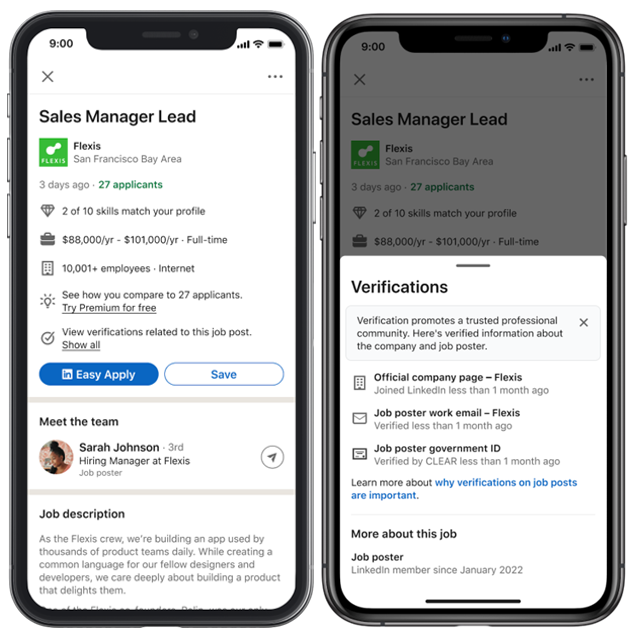While Twitter and Meta are messing around with the definition of what verification means in their apps, LinkedIn is also trying out some new verification elements, as a means of adding another level of trust in its listings.
Last month, LinkedIn launched the initial stages of a new personal identification verification process, which enables users to add a confirmation note to their profile by providing their Government-assigned ID. And now, LinkedIn’s also testing new verification elements within job posts, which will provide more context as to who the prospective employer is, based on their LinkedIn info.

As you can see in these images, now, you’ll see a new ‘Show Verifications’ option on some job posts, which, when tapped, will display a listing of confirmed ID elements from that business.
As explained by LinkedIn:
“When you see verifications on job posts, that means there is information that has been verified as authentic by the job poster, LinkedIn or one of our partners. The verified information will show whether the poster is affiliated with an official company page, has verified their work email or workplace, or their government ID was verified through CLEAR.”
CLEAR is also the key partner in LinkedIn’s personal ID verification process, with the company outsourcing some of the labor load to a third-party, as opposed to checking and confirming IDs by itself.
Which, at 930 million members, would be a lot of work, and is why other platforms have balked at the idea of offering wide-scale ID verification processes – at least for free. Twitter has included phone number confirmation in the Twitter Blue sign-up process, which is not an actual ID verification process, while Meta Verified does include a government ID verification requirement. But it’s only, of course, for paying subscribers.
That limits the labor load on Meta’s team, while LinkedIn’s process provides another route – though one which will still be hard to scale (LinkedIn’s ID verification is only available to users in the US right now).
Still, for those that are able to utilize these ID methods, it’ll provide additional confirmation that they are who they say, and that the position will actually be within the company as advertised, and not some fake business trying to dupe people with a recognized name.
Which is another issue that LinkedIn’s dealing with, and has always faced to some degree. Which is why these types of verification elements could be important – because right now, anyone can claim that they worked for any company in the app, with no way for the actual company page to disown or stop them from such.
Maybe, then, this will be a significant step in facilitating more trust in the platform, and ensuring users can feel more comfortable applying for jobs in the app.
LinkedIn says that verifications on job postings are rolling out in limited capacity.



